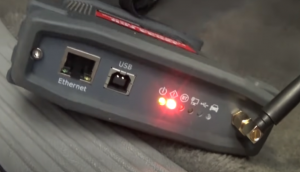Even though using a scan tool has become a handy solution to get error codes from our vehicles, there are situations where you need to jump the port. At this point, you need to know how to jump the obd2 port properly. These include when you need to read and clear the DTCs. Follow our step-by-step guides for this case.
Why You Need to Jump The OBD2 Port
There are two major reasons why you need to jump the OBD2 port. First, your OBD2 port is broken or simply can’t communicate with the scanner. Second, your scanner isn’t compatible or you don’t have the scanner at all. You need to read the Autel IM608 Advanced Obd2 Scanner Review to see whether or not it’s compatible with your car.
Regardless of the reason, jumping the OBD2 port becomes necessary if you either need to read or clear the codes immediately. Reading and resetting the DTCs require different procedures to apply.
How To Jump OBD2 Port for Reading The DTCs

There are two major ways to jump the OBD2 port for reading the possible error codes in your vehicle. Before learning How To Use obd2 Bluetooth Scanner
in your car, you can practice these methods. These include the engine on-off procedure and jumping the pins of OBD2 ports.
1. Engine On-Off Procedure
This procedure includes turning on and off your engine multiple times in sequences to obtain a reading of possible DTCs. If your car has the OBD2 system, you can generally follow these steps:
- Quickly turn the ignition on, off, and on. Depending on the engine, you may have to repeat this process three times, five times, or even more. If you accidentally start the engine during this process, you’ll have to start over the procedure.
- You should keep an eye on the MIL indicator on the dashboard. To begin the process, the check engine light will begin to blink. In the computer’s two-digit problem code, each flash refers to a specific number. The first and second digits are separated by a pause.
- Make a note of the blink and pause sequences as they appear on the MIL The codes’ meanings can be found in your owner’s manual. Symbols and code definitions vary by auto manufacturers.
2. Jumping Pins of The OBD2 Ports
Another way to jump the OBD2 port is to literally jump the pins. At this point, you’d need a paperclip and a piece of paper to write the codes then carefully follow these steps.
- Find the OBD Ports under the dashboard on the driver’s side, where a scanning device can be plugged in. Connect the ports point to point. In the meantime, keep an eye out for any check engine light flashing for the DTCs.
- If your dash cluster is digital, you can start ignition while pressing the RESET and TRIP buttons on the odometer at the same time. This approach reads the fault codes and would typically display them on the odometer display in one or another way.
- While driving, repeatedly start and stop the vehicle while holding down the RESET and TRIP buttons on the odometer. Disengage the odometer buttons. You might need to wait for a while before the system displays the fault codes on your odometer screen.
- Note the error codes or DTCs on the paper and find the meaning from the user’s manual or authorized references. There might be generic codes and manufacturer-specific codes. If you know the meaning, you’d know what’s wrong with your vehicles.
Jump OBD2 Port for Resetting The DTCs

The OBD2 port 2 is there to enable communication with onboard diagnostic tools. In the situation where the OBD2 is unable and you want to jump it, you can’t use OBD2 Scanners For Land Rovers for sure. Fortunately, there’s a way to reset DTCs without using OBD2 Port. While there might be slightly different procedures for car makes and models, you can refer to the steps we’ve summarized below.
- Reserve a flat and secure spot to settle your vehicle. When you’re done with the parking brake, lift the hood.
- The battery’s negative black cable should be detached properly. Remove the battery terminal clamps with a basic wrench.
- Detach the battery’s positive red cable. You must restrict cables from coming into contact with each other at any point during this process.
- The ignition switch should be cycled between the on and off positions three to five times once the battery cables have been removed.
- You can press the horn with an unplugged battery to drain all of the ECU’s remaining electrical power. This is very important for resetting the DTCs.
- Wait around ten minutes before reattaching the battery even though you can do so immediately. While it’s optional, it would ensure the good result of your attempts
- You can now reconnect the cables of the battery properly at their positions. After the black negative terminal, the red positive terminal should be connected. Make sure the clamps are properly tightened.
- Turn on the ignition and examine the dash for any warning lights. Let the engine warm-up before driving. If the procedure is successful, the MIL should be turned off by now.
FAQs
How do I test my OBD port?
You can check the resistance of the port using a multimeter (the ignition must be turned off) and see whether it matches the requirements. Otherwise, you can simply check with the manufacturers.
How do I bridge OBD2 ports?
You can either plug a cigarette lighter adapter, CAN cable, or OBD connector into the onboard diagnostic port. There’s no need to add other connectors to bridge the ports.
Can you start a car with OBD2?
Yes, ultimately of course. You can control certain, but not all, things on some cars. You can control the A/C pump and other computer-controlled devices using the connector.
Does a car have to be running to check codes?
In order to access the diagnostic system, you don’t need to start the engine. Turning the ignition key would be sufficient to power the onboard diagnostic system.
Conclusion
The most important thing to remember when you see the check engine light illuminating is to not freak out! If the port isn’t accessible or you don’t have a scanner, you can follow our guide above to jump to the OBD2 port.
Going straight to the dealership or your favorite garage and leaving the work to the professionals is a far better option. Either way, the problems must be solved first before resetting the code.

As a mechanical engineer, it’s easy for David to explain the functionality of the tool. David test most of the tools before writing a review. its help him to learn something new and suggest the best product for you.





